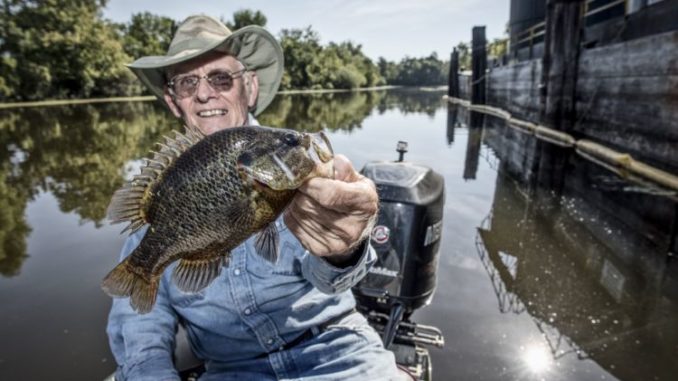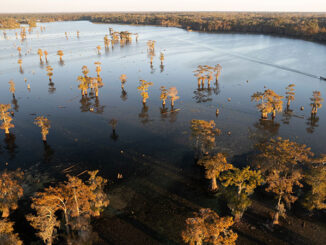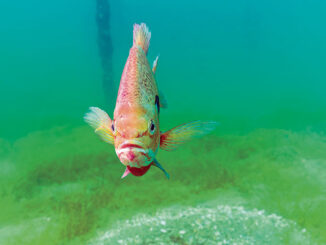
Covering water until beds are located results in big catches
Temperatures are soaring and thunderstorms pop up every day, but that hasn’t slowed the bream bite in the Atchafalaya Basin.
That was proven yesterday when my father, Allen, and I headed to the sprawling swamp to explore new waters. We launched out of the Bayou Pigeon landing, hit the bayou and ducked into a complex of canals to hunt for bull bream.
By 4 p.m. we had burned through 400 crickets and had an ice chest stuffed with 131 tasty little panfish. And we threw back 50 or 60 small ones.
The biggest problem we faced was finding open banks to fish: Water hyacinth and salvinia literally coat that portion of the Basin. There were canals we couldn’t even get into because of the thick vegetation.
Some anglers were fishing the edges of the hyacinth mats, and it’s certain they were catching fish (we caught a few that way). But I hate fishing bream like that. So we simply searched until we found an area with some exposed banks.
Our first success came down one side of a barge in a location canal. We hadn’t gotten a bite, and while trolling past the barge, I tossed my cricket to one of the pilings to which the barge was tied — and my cork plunged to the depths.
A huge goggle-eye was soon flopping on the deck.
We caught about a dozen fish (mostly warmouth) that way before moving on.
The remainder of the day was spent in a 400- or 500-yard stretch that, while lined with hyacinths, offered access to the banks and flooded cypress trees in several spots.
Two of those vegetation breaks contained beds, and we anchored up and absolutely mauled the fish.
Here are some tips to catch a box of bream:
- Sleep in — We hit the water at 7:30 a.m. because the bream bite really gets going when the sun hits the water. So there’s no reason to get up insanely early.
- Find clean water — Bayou Pigeon was horrifically muddy, but the water turned really pretty once we turned into the canals.
- Fish hard — It’s obvious, but you won’t catch a fish when you’re running the outboard. So find a stretch of bank, put your head down and keep bait in the water.
- Don’t stop for every bite — Catching a fish doesn’t necessarily mean you’ve found a bed. We spent much of the day trolling steadily, picking up bites scattered among the trees and cypress knees. Only if we got two bites in the same spot would we drop anchors and fish it hard. If we didn’t get several more bites quickly, we moved on.
- Test the waters — Whenever one of us would get a bite, the other angler would drop a cricket within inches of where the strike occurred. If the cork disappeared, it signaled the presence of a bed.
- Use two anchors — Positioning the boat is key to catching fish on a bed. And there’s nothing worse than washing the bed with your trolling motor prop. So ease into position and lower an anchor in the front and an anchor in the back to hold the boat firmly in place. Sometimes it’s best to just pass up the spot, make a circle and make a new approach to ensure you don’t bugger up the bed.
- Use jig poles — I love an ultralight with a slip cork, but jig poles allow for pinpoint accuracy in bait placement. My poles are 10-foot Mr. Crappie Slab Shakers.

